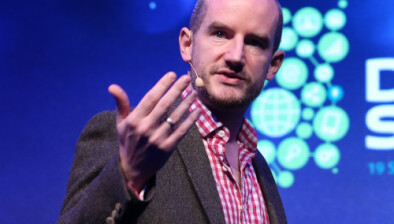Dr Pearce Clancy: Storm Éowyn and the ECHR – an Irish case to answer?

Dr Pearce Clancy
Dr Pearce Clancy ponders whether victims of Storm Éowyn could successfully bring climate litigation to the European courts.
Storm Éowyn was one of the most destructive storms Ireland has ever seen, with winds of 183 km/h recorded by the Mace Head weather station in Connemara. The devastation wrought by Éowyn reportedly left around 768,000 Irish homes without access to electricity, on top of further loss of access to water, phone coverage, and internet. Éowyn’s effects were felt most of all in the west, where electricity and internet outrages stretched well into mid-February. Éir is claiming that all services will be restored by the end of February.
The direct link between human-induced climate change and increasingly violent windstorms in Ireland remains unclear, however there is evidence to suggest that global warming has resulted in more frequent winter storms in Ireland, particularly insofar as precipitation is concerned. In any event, the frequency of such storms is undoubtedly on the rise, and their impact on human life is being felt.
The link between human rights and state failures to adequately mitigate and respond to climate change has recently gained traction before the European Court of Human Rights, most pertinently in the 2024 Grand Chamber decision in the high-profile ‘Swiss Grannies’ case. This case was brought to Strasbourg by a group of elderly Swiss women (the titular ‘grannies’) as well as KlimaSeniorinnen (Senior Women for Climate Protection), a non-profit dedicated to promoting the rights of elderly women in light of climate change. The central contention was that increasingly frequent and intensive heatwaves in Switzerland during the summer months were impacting on the grannies’ Convention rights, and that Switzerland had failed in its obligations to adequately tackle the issue of climate change.
The Grand Chamber’s approach to climate change is significant in two regards. First, it took a generally open approach to the substantive relationship between the adverse effects of climate change and Article 8 of the Convention, which provides protection for the right to private and family life. In the absence of any specific environmental rights within the Convention itself, Article 8 has long been the typical port of call for environmental cases. Freedom from pollution and environmental harm has been recognised as a precondition to private and family life — put simply, if such activities interfere with your ability to continue to live in your home or community, you may have a case under Article 8. What had not been established before, however, was that this analysis could also apply to the effects of climate change rather than simply, for example, pollution from a nearby toxic waste treatment facility or iron smelter.
Second, however, the Grand Chamber took an unfortunately narrow approach to standing for climate change cases. As required by Article 34 of the Convention, applicants to Strasbourg must qualify as a ‘victim’, meaning they must demonstrate that their rights have either been directly or indirectly violated, or alternatively that they may ‘potentially’ be so affected in the future. In the context of climate change, and the failure of states to properly adapt to and mitigate the adverse effects of climate change, this could include everyone and anyone. The Chamber was evidentially fearful of the implications of this and so developed new — and quite strict — qualifications as to who or what could qualify.
The Grand Chamber made it highly difficult to establish standing as an individual, and to limit standing for associations to those specifically established for representative advocacy purposes. The exact requirements for individual standing was formulated by the Chamber as requiring that:
-
the applicant must be subject to a high intensity of exposure to the adverse effects of climate change, that is, the level and severity of (the risk of) adverse consequences of governmental action or inaction affecting the applicant must be significant; and
-
there must be a pressing need to ensure the applicant’s individual protection, owing to the absence or inadequacy of any reasonable measures to reduce harm.
For associations (ie non-profit and non-governmental organisations), the Chamber set out that these entities must be:
-
lawfully established in the jurisdiction concerned or have standing to act there;
-
able to demonstrate that it pursues a dedicated purpose in accordance with its statutory objectives in the defence of the human rights of its members or other affected individuals within the jurisdiction concerned, whether limited to or including collective action for the protection of those rights against the threats arising from climate change; and
-
able to demonstrate that it can be regarded as genuinely qualified and representative to act on behalf of members or other affected individuals within the jurisdiction who are subject to specific threats or adverse effects of climate change on their lives, health or well-being as protected under the Convention.
The threshold for individual standing was set so high that the grannies could not meet it. Despite showing convincing evidence that climate change had resulted in increased heatwaves in Switzerland, and that elderly people are at a higher risk from such heatwaves, the Chamber found the individual complaints to be inadmissible. One issue the Chamber found was that the individual grannies had not produced medical reports demonstrating their individual vulnerabilities. The association fared better, and was actually successful in its claim, with its standing being established based on its wide and representative membership and its highly specialised function in advocating for the rights of elderly Swiss women in the context of climate change.
This raises the interesting question as to whether an Irish case concerning the state’s failure to adequately react to Storm Éowyn would succeed in Strasbourg. Assuming first of all that any hypothetical applicant first went through the time-consuming process of exhausting domestic remedies, establishing victim status would pose a significant challenge. As in the grannies case, an association such as Friends of the Irish Environment would necessarily have an easier time establishing standing, however it is possible to envisage a ‘Connemara granny’ — an elderly person left without access to electricity and water during late February and early March 2025. As a member of a vulnerable group, it is conceivable that such an applicant could demonstrate that they meet the requirements set out above, and that the state had violated its positive Article 8 obligations by failing to adequately prepare national infrastructure for Storm Éowyn.
Even beyond proving victim status, however, our imaginary applicants may nonetheless stumble over the obstacle of proving that Éowyn was actually caused by climate change. There is certainly growing confidence amongst scientists that climate change is increasing the frequency and strength of such weather events, however there is considerably more certainty on the link between climate change and the heatwaves at issue in the Swiss Grannies case. In any event, Storm Éowyn has certainly put the state on notice that that the infrastructure in the west of Ireland is highly vulnerable to any future extreme weather events, even those not reaching the intensity of Éowyn.
Either way, whether a future Strasbourg claim is feasible or not should not distract from the fact that the effects of climate change are being felt in Ireland, and that these effects are having a direct and serious impact on the ability of many to properly exercise the rights guaranteed by the European Convention. Using the language of rights, including in discussing while discussing the impacts of climate change on human life is crucial to foreground the pressing need for ambitious state action, within Ireland and elsewhere. Even if Éowyn never makes it to Strasbourg, or indeed is never the subject of a successful rights claim in the Irish courts, it is past time for full and genuine Irish engagement with these issues, rather than attempting to deny or derail the crucial role of human rights, including human rights litigation, in tackling the climate crisis.
- Dr Pearce Clancy teaches climate justice in the Irish Centre for Human Rights at the University of Galway.










